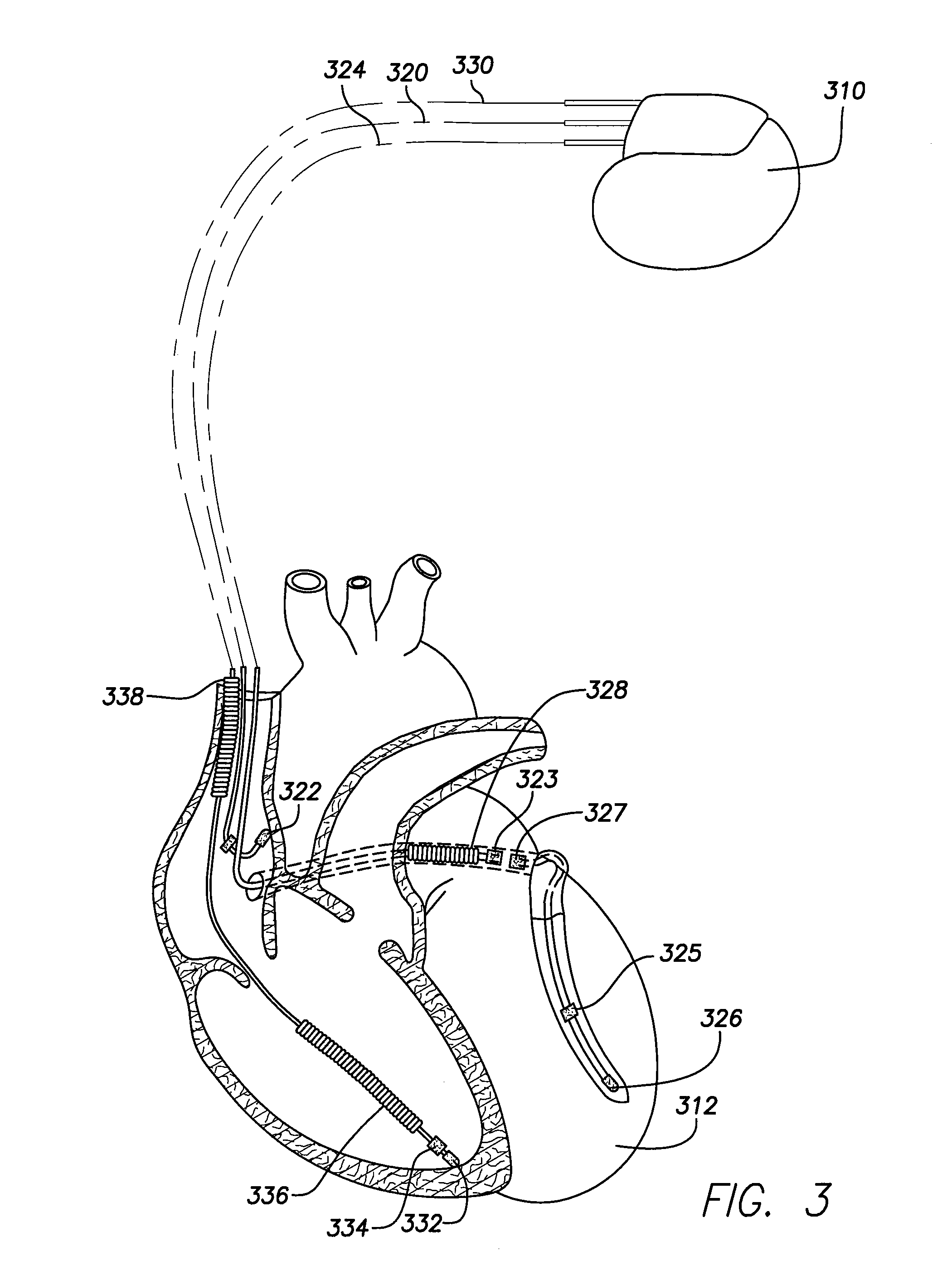Cardiac stimulation device including sleep apnea prevention and treatment
a technology of cardiac stimulation and sleep apnea, which is applied in the field of providing therapy to patients with sleep apnea, can solve the problems of mechanical blockage of the airway, obstructive sleep apnea, and reduce the muscle tone of the airway, so as to prevent sleep apnea
- Summary
- Abstract
- Description
- Claims
- Application Information
AI Technical Summary
Benefits of technology
Problems solved by technology
Method used
Image
Examples
Embodiment Construction
)
[0037]The following describes the best mode presently contemplated for practicing the invention. The description is not to be taken in a limiting sense but is set forth to convey the general principles of operation and structure of the illustrative embodiments. The issued claims define the invention scope. In the following description, like numerals or reference designators refer to like parts or elements throughout.
[0038]Referring to FIG. 1, a highly schematic block diagram depicts an example of an implantable cardiac stimulation device 100 that includes one or more physiologic sensors 102 and one or more pulse generators 104. The physiologic sensor 102 is capable of sensing a physiologic parameter such as activity or activity variance, respiration, minute ventilation, cardiac conductivity, blood oxygen concentration, blood carbon dioxide concentration, stroke volume, and others. Still other suitable parameters include parameters based on sensing of cardiac electrical signals, the...
PUM
 Login to View More
Login to View More Abstract
Description
Claims
Application Information
 Login to View More
Login to View More - R&D
- Intellectual Property
- Life Sciences
- Materials
- Tech Scout
- Unparalleled Data Quality
- Higher Quality Content
- 60% Fewer Hallucinations
Browse by: Latest US Patents, China's latest patents, Technical Efficacy Thesaurus, Application Domain, Technology Topic, Popular Technical Reports.
© 2025 PatSnap. All rights reserved.Legal|Privacy policy|Modern Slavery Act Transparency Statement|Sitemap|About US| Contact US: help@patsnap.com



